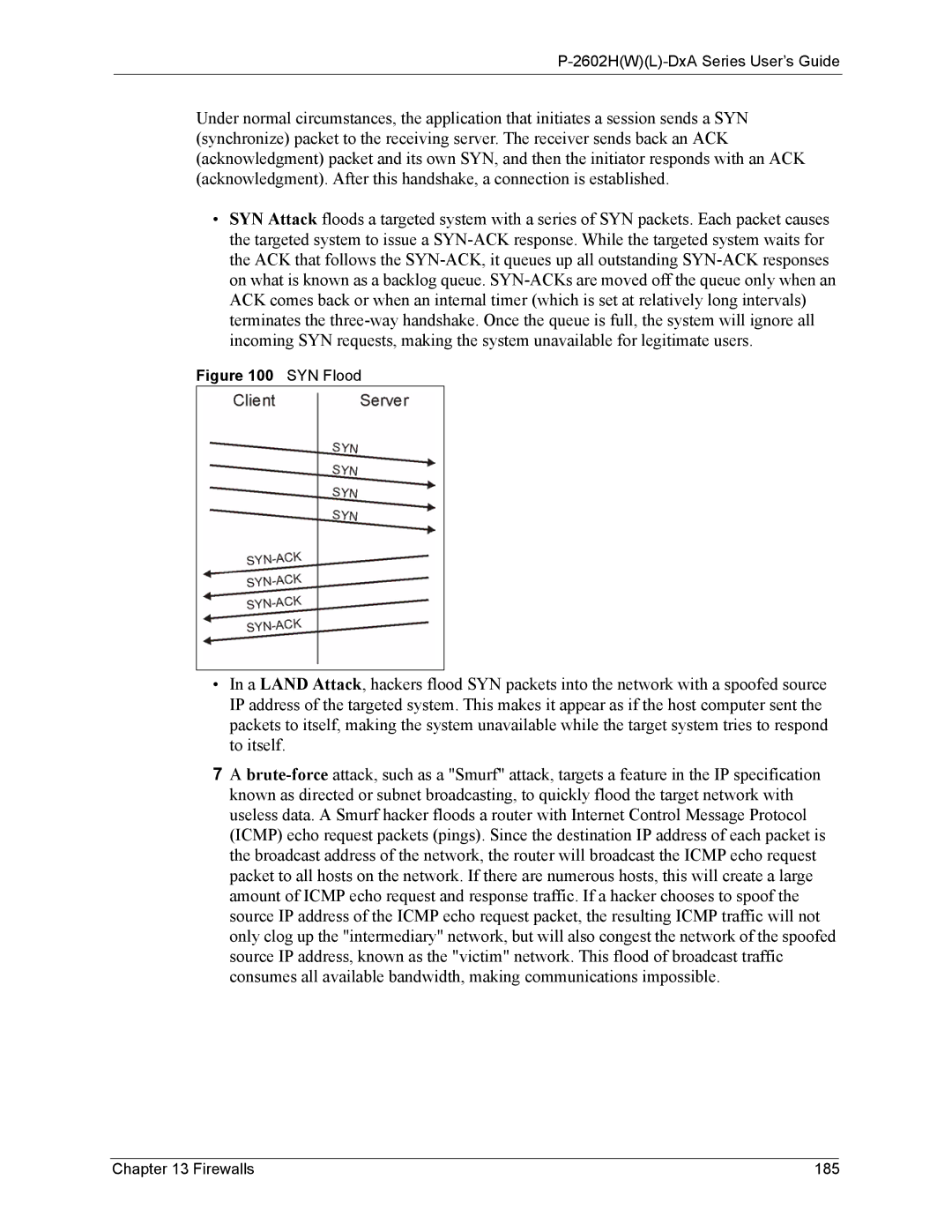
P-2602H(W)(L)-DxA Series User’s Guide
Under normal circumstances, the application that initiates a session sends a SYN (synchronize) packet to the receiving server. The receiver sends back an ACK (acknowledgment) packet and its own SYN, and then the initiator responds with an ACK (acknowledgment). After this handshake, a connection is established.
•SYN Attack floods a targeted system with a series of SYN packets. Each packet causes the targeted system to issue a
Figure 100 SYN Flood
•In a LAND Attack, hackers flood SYN packets into the network with a spoofed source IP address of the targeted system. This makes it appear as if the host computer sent the packets to itself, making the system unavailable while the target system tries to respond to itself.
7A
Chapter 13 Firewalls | 185 |
